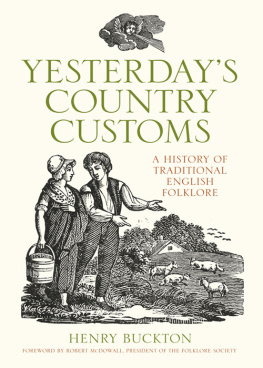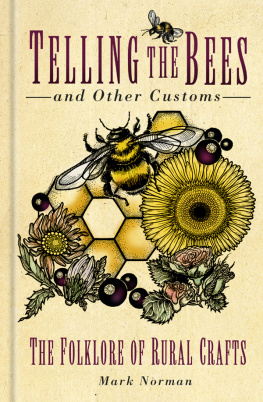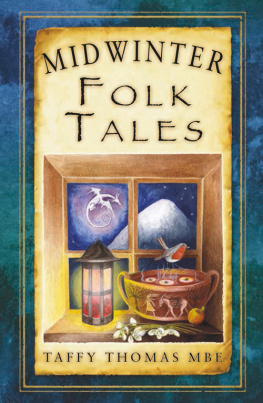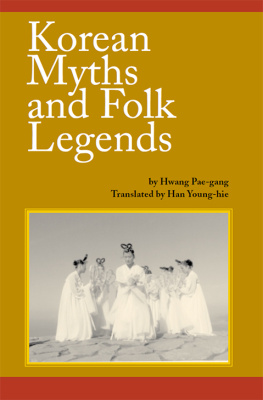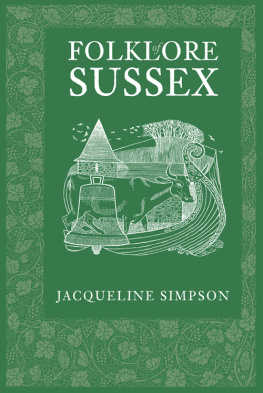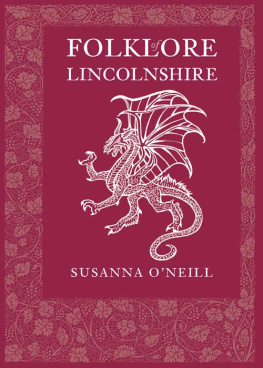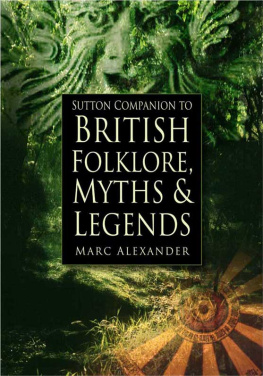CONTENTS

I would like to thank the following individuals and organisations for their help in putting this book together:
Chapter One Hobby Horses thanks to: Muriel Marrison; Phil Underwood, The Original Sailors Horse www.mineheadhobbyhorse.co.uk; Daphne McCutcheon, www.minehead-online.co.uk; and Sandy Glover.
Chapter Two Hunting of The Earl of Rone thanks to: Barbara Brown, secretary of the Earl of Rone Council.
Chapter Three Cheese Rolling thanks to: The Citizen; Paul Biggins, www.ecofocus.co.uk; Jane Harrad-Roberts Marketing Projects the Chester Food and Drink Festival; Cal Williams, www.randwick.org.uk; and Valerie Martin.
Chapter Four Shrovetide thanks to: Lorna Dirveiks, secretary of The Friends of Atherstone Heritage; David Stowell; Stephen McKay; Michael Brace; and Andy Savage, www.derbyphotos.co.uk.
Chapter Five Unusual Sports and Games thanks to: Richard Croft; Biff Raven-Hill, www.wartimehousewife.wordpress.com; and Steve Foster, chairman of Egremont Crab Fair and Sports, www.egremontcrabfair.com.
Chapter Six Mumming thanks to: Peter J. Walls; Tom Hughes, Education Officer for Cheshire Museums; Will Riding; Pam Fray; and Colin Smith.
Chapter Seven Straw Bears thanks to: James Yardley; Brian and Christine Kell; Peter Williams (Director of The Whittlesea Straw Bear Festival 2008-2011); From Whittlesey Straw Bear by George Frampton, Cambridgeshire Libraries Publications, 1989.
Chapter Eight Wassailing thanks to: Glyn Baker.
Chapter Nine Flitch Trials thanks to: Penny Hurley, Great Dunmow Museum Society; Catherine Metson; David Stone; and Peter Street, chairman of Dunmow & District Historical & Literary Society.
Chapter Ten Hocktide thanks to: Dr Hugh Pihlens, Hungerford Historical Association, www.hungerfordhistorical.co.uk; Hungerford Virtual Museum www.hungerfordvirtualmuseum.co.uk; and Sylvia Breadmore, Clerk to the Town & Manor of Hungerford and Liberty of Sanden, www.townandmanor.co.uk.
Chapter Eleven Beating the Bounds thanks to: Revd Grant Fellows; and Terry Warburton, MBE.
Chapter Twelve Tree Dressing thanks to: Ed Scutt; Phil Knott; Rosie Evans, Arbor Tree Festival Committee; Julie Aalen, Weald and Downland Open Air Museum; Andrew Bain, vice chairman of the Bawming Committee; and Simon Garbutt.
Chapter Thirteen Jack in the Green thanks to: Colin Bewes; Matthew Alexander and Roger Twitchin of Pilgrim Morris Men; Megan Taylor of Oyster Morris; Mike Riley of Mad Jacks Morris; Alan Henderson of Brentham Society; Verne Sanderson, Operations Manager Festivals, Arts, Theatres and Events, Medway Council; Lisa Caleno, Senior Media Officer, Medway Council; Simon Kelsey; Gordon Newton; Tim Funnell; and Keith Leech for quotes from his book The Hastings Traditional Jack in the Green, published by Hastings Borough Council in 2008.
Chapter Fourteen Rushbearing thanks to: Peter Thomas; Peter Ludlam, Sowerby Bridge Rushbearing Association; Pauline Journeaux, Rochdale Online; Garry Stringfellow; and Ann Bowker.
Chapter Fifteen Well Dressing thanks to: Sir Richard FitzHerbert, www.tissingtonhall.co.uk; Glyn Williams; Ann Pocklington; Mrs Pat Swatton; Mrs Rita Walsh; and Chris Simpson, secretary of the Buxton Wells Dressing Festival.
Chapter Sixteen Fire Festivals thanks to: Simon Reed, www.golowan.org; Michael Brace; Jack Gritton, www.westwitton.org.uk, www.burningbartle.org.uk.
Chapter Seventeen Bonfire Night thanks to: Sian Riddle, Lewes Borough Bonfire Society, www.boroughbonfiresociety.co.uk; Lewis Clarke; and Peter Trimming.
Chapter Eighteen Guy Fawkes Carnivals thanks to: Dave Stokes, publicity officer to Bridgwater Guy Fawkes Carnival, www.bridgwatercarnival.org.uk; Chris Hocking, director and trustee of Bridgwater Guy Fawkes Carnival; Shelly Ford, secretary for Gorgons Carnival Club; and Phil Williams.
Finally, I would like to thank Robert McDowall, president of The Folklore Society, for writing the foreword to the book.
A LL PUBLICATIONS THAT stimulate interest in English customs past and present are welcome because they stimulate the public interest in folklore. Such publications are particularly welcome when they include descriptions of customs that are still celebrated.
Yesterdays Country Customs is an enlightening and instructive collaboration by people who organise, participate in, or attend celebrations of country customs. Henry Buckton has assembled their narrative, thoughts and recollections in a thoughtfully presented, attractively illustrated book covering eighteen major country customs. A chapter is devoted to each of the eighteen customs featured in the book. The customs range from well-known traditions such as beating the bounds, Bonfire Night and tree decorating to more obscure customs such as Hunting the Earl of Rone and flitch trials, which are now confined to a few or single location. Even within the chapters covering the more popular themes, those familiar with yesterdays country customs will find one or two accounts of customs and practices from less familiar sources. The featured customs and contributors are well documented for those who wish to pursue more detailed research on particular themes or customs.
Yesterdays Country Customs, like other publications in its genre, is an important contribution to maintaining the general publics awareness of the importance of country customs to folklore and folklore traditions in England. The book rightly confines itself to English country customs, which have different roots to those of its Celtic neighbours, where customs and traditions often reflect broader national, historical or political themes of struggle and strife.
This book works on a number of levels. It is an English tour guide to country customs. It is a singular example of how information on disparate customs from informed people and groups, who organise and participate in country customs, can be transformed into a well-constructed book. The book is instructive to those who have passing interest in customs and folklore, and to those who have a more detailed knowledge of English country customs and folklore. I commend the book to a wide readership.
Robert McDowall
President, The Folklore Society
I N ENGLAND TODAY we enjoy a rich diversity of folk traditions, many of which can trace their beginnings back hundreds, if not thousands of years. In fact in some ways they are a living semblance of the nations history. They stem from every phase of our antiquity and embody all the peoples who have traditionally enriched our culture, from the Celts to the anoverians. They encapsulate into the nations popular psyche some of the greatest moments from our past, and celebrate best-loved heroes or infamous villains.
In this book we visit some of the best-known examples, which are regularly attended by thousands of people. Some of these are now regarded as national, rather than local customs and draw supporters from around the country and indeed throughout the globe. Few of them have a clear definition and in many cases, scholars argue as to their origins and purpose.
As well as experiencing the way in which these customs are observed today, we look back at their histories to try and discover how and why they might have begun, and how they have evolved over the intervening centuries into colourful glimpses of Englands past.
The book is largely written with the help of people who either run these celebrations, or have been involved with them over the years. Its title, Yesterdays Country Customs, might seem slightly contradictory, as all of the events covered are very much alive and kicking today. However, the majority of them are revivals that try and recreate celebrations of the past. Nor are they only celebrated in the countryside, as some of them take place in towns and cities. That said, when most of these customs were first practised, even the most urban spot in the country was a small rural outpost. Collectively, these and many other similar events have contributed to the unique character of the English people and provide a tangible link to the way our ancestors both lived and celebrated.

